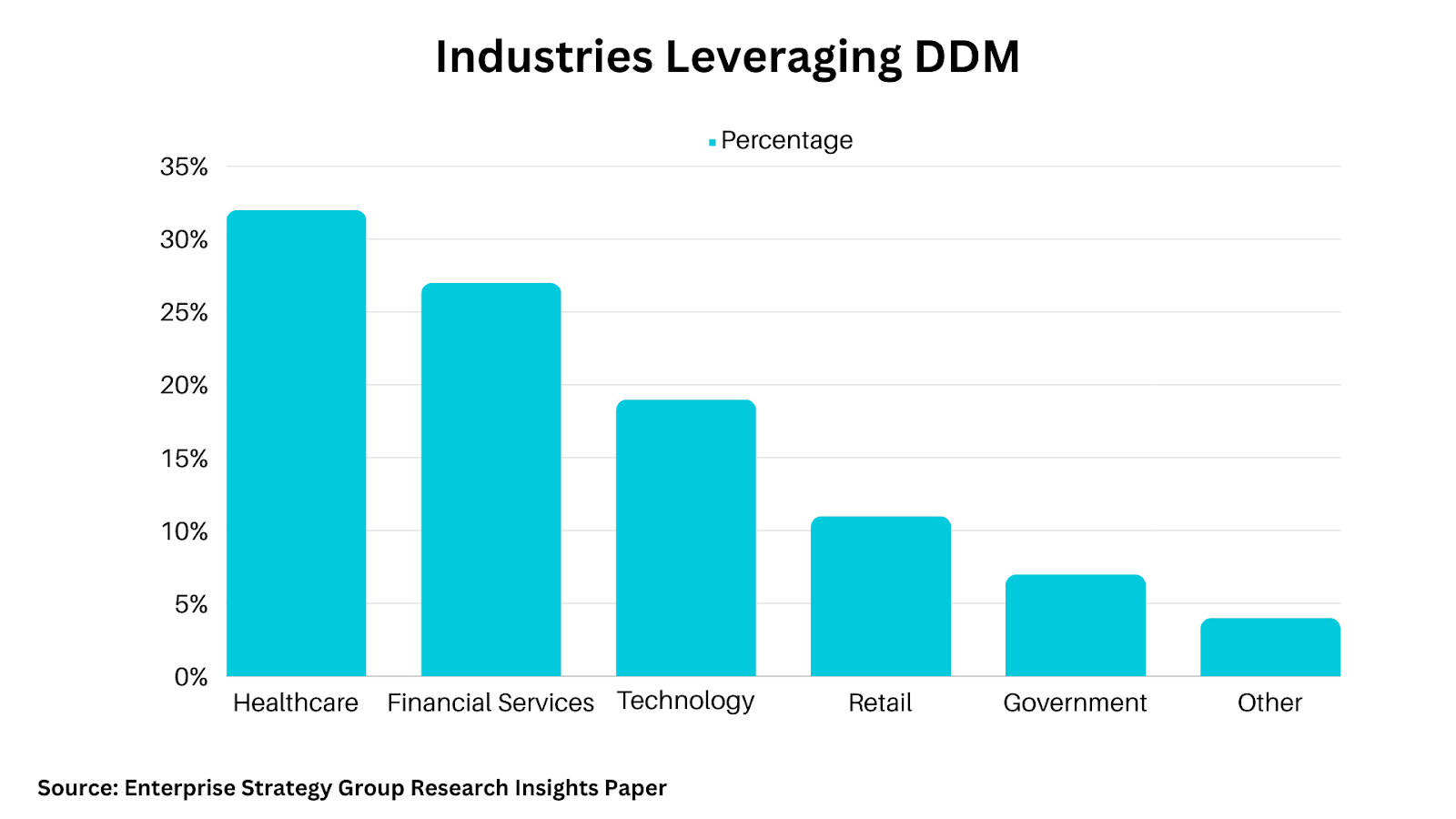There is more and more data now and threats to data keep changing in new ways. And there are more rules than ever about data privacy. In that year alone, more than 422 million individuals faced the repercussions of data compromises, encompassing breaches, leaks, and exposure.
So keeping sensitive information safe has become extremely important. But one vital part of strong data safety plans is still not getting enough attention – dynamic data masking (DDM).
Dynamic data masking hides real sensitive data. It replaces information like names and ages with fake data instead. This fake data looks real but does not actually belong to any real patients. DDM happens automatically without slowing things down. It keeps medical data private while still letting it be usable where appropriate. As health records and cyber dangers multiply, DDM will only get more crucial over time.
The Indispensable Impact of DDM
Dynamic data masking (DDM) hides sensitive data in real time. It does this before giving users the data they ask for, based on set access rules. As requests run, DDM hides things dynamically to stop unauthorized access.
The numbers show that DDM makes a big difference:
- Cuts data breaches by 60% with DDM according to research by Gartner
- 5 times better than just encryption by itself (Cloud Security Alliance)
DDM has major proven security benefits, even if it does its work quietly.
Here are some of the indispensable impacts DDM has:
Protects Patient Privacy
DDM makes sure only certain staff can see patients’ private health information. It lets staff do needed analysis without showing real patient names or details. This stops insider misuse but still allows better care.
Speeds Up Development
Companies used to waste months removing names and details from data before developers could use it. Now DDM hides identities automatically right away instead. This means developers get data faster.
Drives Down Expenses
Getting fined for privacy violations costs healthcare groups millions. DDM slashing breach risks also majorly reduces financial damage.
The difference DDM makes touches every part of running an ethical, effective healthcare business. As threats worsen and workloads grow, that impact compounds each year. Ignoring DDM may leave patient data vulnerable next time.
DDM in Action: Real-Time Protection
Inner Workings
DDM looks at data and where it’s going based on set rules to decide what needs masking at that moment. It hides sensitive info without slowing things down. This lets normal work continue while locking data tight.
For example, when a hospital analyst requests patient records, DDM goes into action. It scans the data for sensitive fields like names, ages, locations, and diagnoses. It then replaces this real personal data with automatically generated fakes. The analyst receives a realistic-looking record with the sensitive parts concealed.
Yet an authorized case worker gets unmasked files for patients in their caseload. The correct data displayed to enable personalized care. Behind the scenes, DDM showed each person only the details they required.
This real-time, customizable protection powered by DDM drives improved security and productivity. As risks accelerate, its intelligent approach prevents oversharing while avoiding workflow interruptions. Healthcare systems gain a privacy shield and a performance boost in one solution.
Adaptive and Configurable
DDM tuning allows setting up the right masking for different data uses. Some examples:
| Research Analysis | – Masks patient names but retains diagnosis codes |
| System Testing | – Realistic but fake data speeds app building |
| Case Reviews | – Masks other patients while exposing assigned records |
In addition, DDM keeps evolving along with new kinds of emerging threats. It adds advanced masking techniques to beat hacking techniques that change over time.
DDM tailors protection by design without limiting appropriate data use. This adaptability bolsters defenses across healthcare’s dynamic landscape. The way DDM grows and shifts protection to match situations makes it extra versatile. This versatile nature adds major strength to healthcare groups’ data safety readiness.
DDM Advantages Over Traditional Security
More Effective and Optimized
A recent survey proves DDM has major advantages:
- 35% better experience balancing usability and safety
- 90% saw no performance lag with DDM
DDM locks down data flowing through systems. This complements encryption applied to stored data. The layers of protection boost outcomes:
Usability – Staff get data tailored to duties without roadblocks
Efficiency – Automatic masking prevents workflow disruptions
Compliance – DDM aligns with healthcare privacy rules
Resilience – Multi-layer defense hampers cyberattacks
Together this means DDM makes security both stronger and smoother. Instead of the sacrifice expected, it unlocks optimizations across healthcare data needs. Patients win with tighter protection and responsiveness. Providers benefit through improved systems. DDM delivers on all fronts.
Regulatory Compliance Aid
Healthcare groups depend on DDM to help follow complex laws:
- 85% use DDM as part of compliance efforts
- Industry experts call DDM an essential part of data privacy plans
Standards like HIPAA require protecting and monitoring patient information access. Failing audits brings multi-million dollar fines. DDM builds in layers of control including:
- Masking sensitive fields like names and treatments
- Granting access per patient and user roles
- Logging all data transactions
This aids compliance through built-in measures aligned to central requirements. DDM makes meeting healthcare privacy rules achievable rather than an obstacle. It offers efficient mechanisms to put complex regulations into practice.
Final Thoughts
DDM brings major security value even if it stays behind the scenes. As dangers and rules expand, DDM’s flexible real-time protection will only get more essential.
The time has come to recognize dynamic data masking as a critical piece of complete data safety efforts. DDM stops threats without stopping work.
DDM keeps earning its place among top data defense tools. As healthcare data expands, so will reliance on DDM to provide quick, adaptable protection across critical systems. DDM secures what matters most – patient health details and provider reputations. The future looks brighter thanks to its silent but powerful capabilities shielding data in motion.
Frequently Asked Questions
1. How does DDM improve security compared to just encryption?
Encryption locks stored data. DDM hides sensitive data flowing through systems in real time. Together they make layered protection.
2. Will adding DDM slow down our systems?
DDM integrates seamlessly across databases, apps, and platforms without causing lag or interruptions.
3. What privacy rules does DDM help follow?
DDM helps comply with healthcare laws like HIPAA. It prevents unauthorized access in real-time to meet key requirements.






